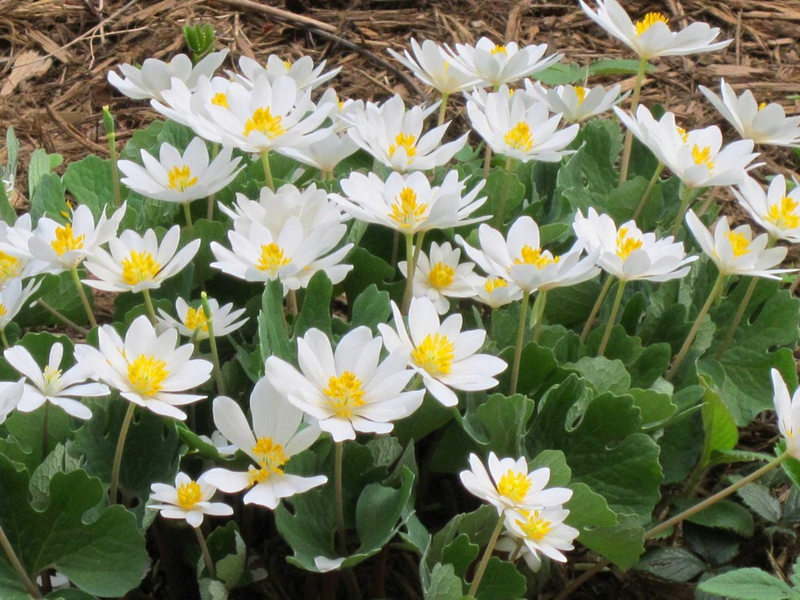Bloodroot
Sanguinaria canadensis
Click here to download a PDF of this plant information page (for printing).

Sun Exposure: Shade
Season of Interest: Spring
Bloom Time: April - May
Bloom Color: white / Yellow Cener
Height: 6 in.
Spread: 8 in.
Spacing: 10 in.
Water Needs: Above Average
Maintenance: Very little
Soil Type: Moist, High in organic matter
Soil pH: Acidic
Soil Drainage: Well drained
Pests: None, Deer and Rabbit resistant
Diseases: None
Wildlife: Bees, Butterflies, Birds

Description:
Known to botanists as Sanguinaria canadensis, bloodroot plants are herbaceous perennials that spread using rhizomes to form colonies under the right conditions. They are indigenous to Tennessee. Bloodroot's flowers don't last for long; blink, and you've missed the display. But if you're lucky enough to have a colony of them, the impact of such a mass of flowers is quite powerful while it lasts. Moreover, the leaves-which stick around for a much longer time than the flowers-bear an intriguing shape and color.
Bloodroot plants are considered spring ephemerals. In a nutshell, spring ephemerals don't hang around for long; they take care of business in spring and then disappear until next year. This plant is a great choice for a woodland garden. It also works well in a shade garden that receives partial sun in spring, but that becomes shadier in summer when the nearby trees leaf out. Plant bloodroot in spring or fall; like many rhizomes or bulbs, seasonal bloodroot grows quickly in spring. For more information see:
plants.ces.ncsu.edu/plants/sanguinaria-canadensis
Care and Growing Tips:
Bloodroot's habitat in the wild is typically on moist slopes or along stream beds in deciduous forests. In the landscape, locate it in an area that will receive some sun in spring but that will be shaded in summer. It does better in a well-drained, acidic soil enriched with hummus. When first planted, water bloodroot adequately to get them established. Then, water once a week or as needed to keep the soil from drying out. No fertilizer necessary for your bloodroot; a layer of compost, spread around the edge of the plant is all that's needed.